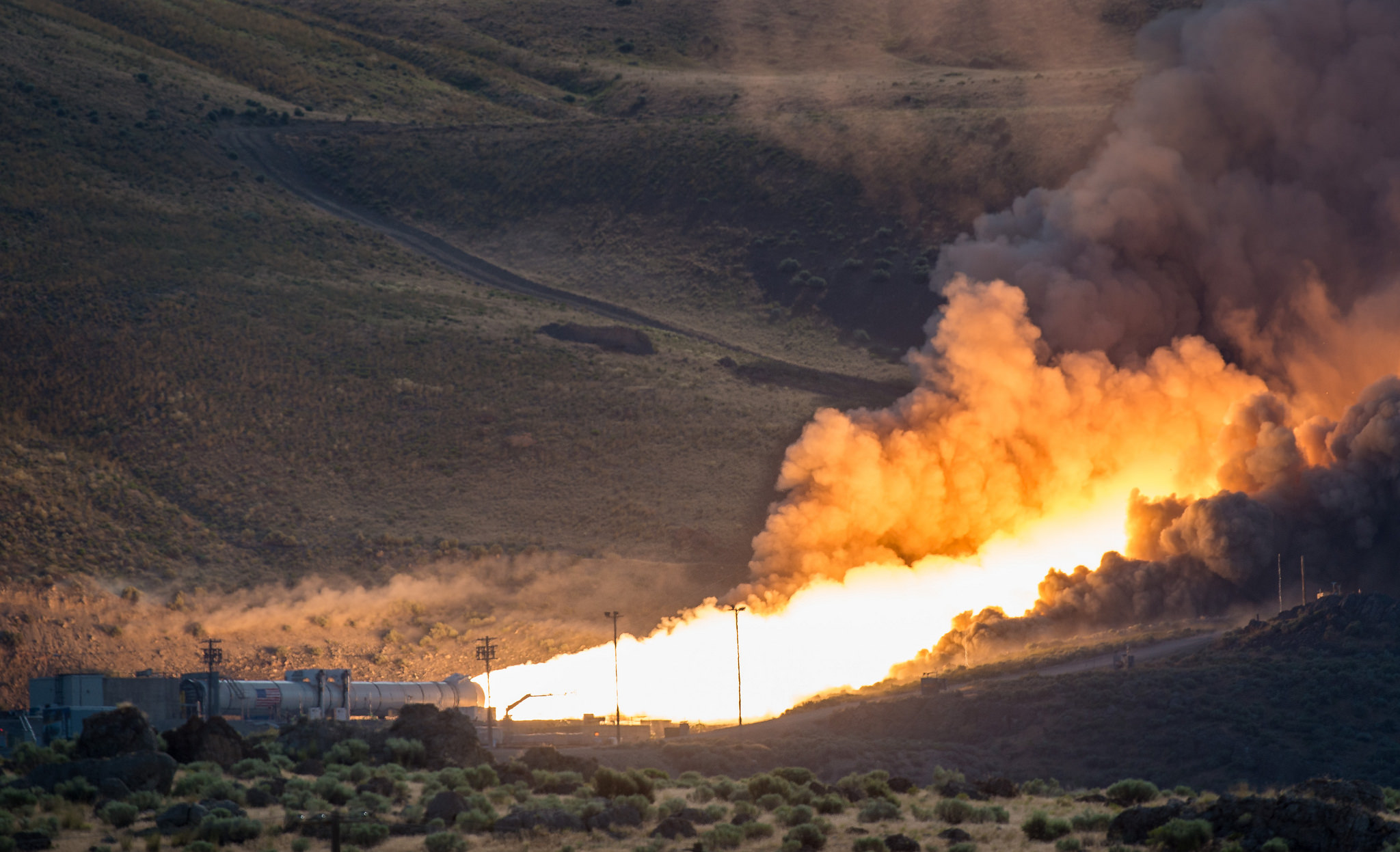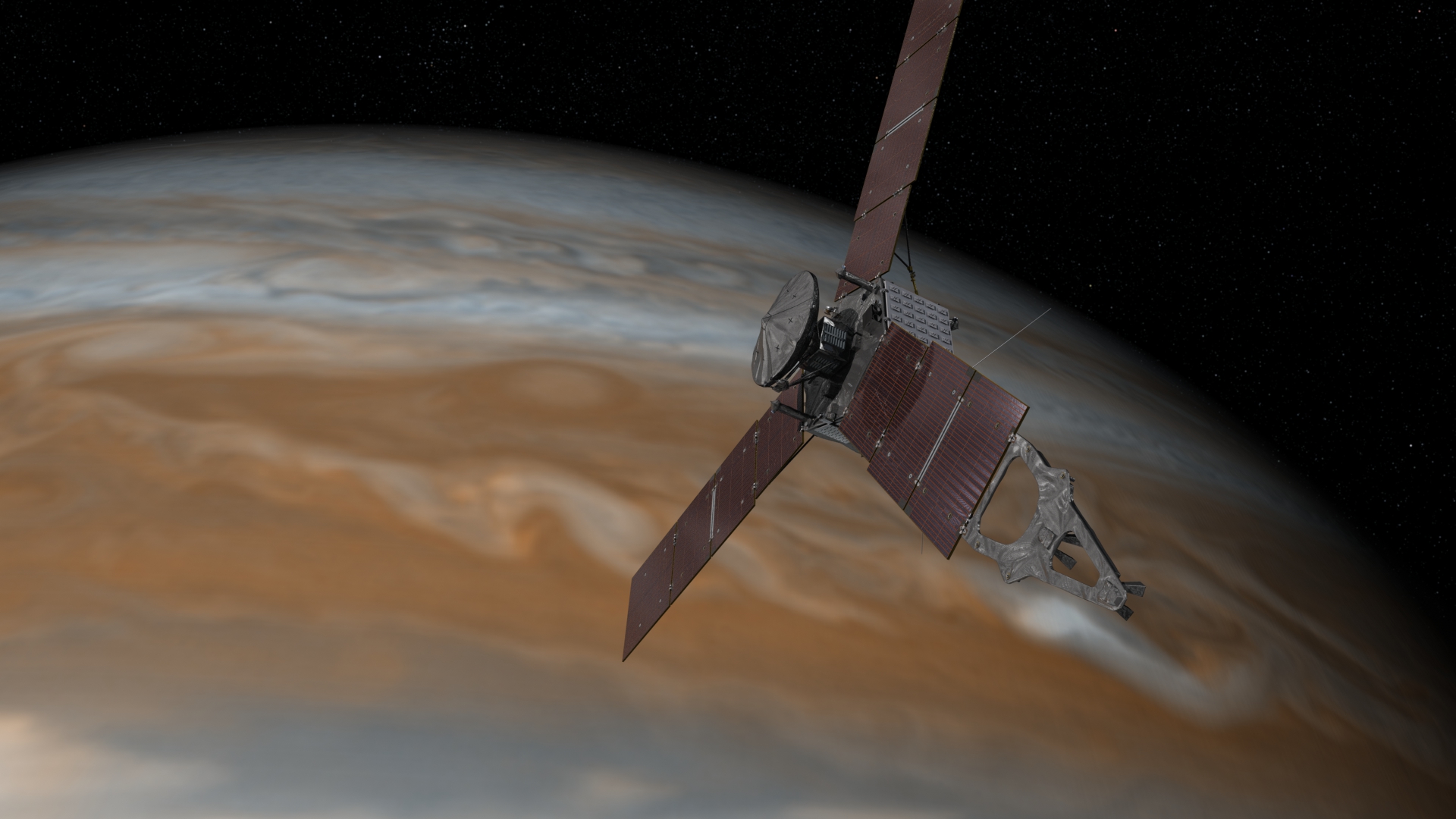In This Week’s Star
- NASA’s Space Launch System Booster Passes Major Milestone on Journey to Mars
- Marshall Leadership Looks to the Future in All-Hands Meeting
- Juno Meets Jupiter for July Fourth Fireworks
- NASA Planetary Science Director Discusses Journey to Mars in Marshall Association Speech
- Clandestine Black Hole May Represent New Population
- Marshall’s 2016 ‘Take Our Children to Work’ Activities Loft Young Minds Skyward
- This Week in NASA History: ABMA Transferred to NASA, Creating Marshall Center — July 1, 1960
- Obituaries
NASA’s Space Launch System Booster Passes Major Milestone on Journey to Mars
A booster for the most powerful rocket in the world, NASA’s Space Launch System, successfully fired up June 28 for its second qualification ground test at Orbital ATK’s test facilities in Promontory, Utah. This was the last, full-scale test for the booster before SLS’s first uncrewed test flight with NASA’s Orion spacecraft in late 2018, and a key milestone on the agency’s journey to Mars.
“This final qualification test of the booster system shows real progress in the development of the Space Launch System,” said William Gerstenmaier, associate administrator for the Human Exploration and Operations Mission Directorate at NASA Headquarters. “Seeing this test today, and experiencing the sound and feel of approximately 3.6 million pounds of thrust, helps us appreciate the progress we’re making to advance human exploration and open new frontiers for science and technology missions in deep space.”
The booster was tested at a cold motor conditioning target of 40 degrees Fahrenheit –the colder end of its accepted propellant temperature range. When ignited, temperatures inside the booster reached nearly 6,000 degrees. The two-minute, full-duration ground qualification test provided NASA with critical data on 82 qualification objectives that will support certification of the booster for flight. Engineers now will evaluate these data, captured by more than 530 instrumentation channels on the booster.
When completed, two five-segment boosters and four RS-25 main engines will power SLS on deep space missions. The solid rocket boosters, built by NASA contractor Orbital ATK, operate in parallel with SLS’s main engines for the first two minutes of flight. They will provide more than 75 percent of the thrust needed for the rocket and Orion spacecraft to escape Earth’s gravitational pull.
“Today’s test is the pinnacle of years of hard work by the NASA team, Orbital ATK and commercial partners across the country,” said John Honeycutt, SLS Program manager at NASA’s Marshall Space Flight Center. “SLS hardware is currently in production for every part of the rocket. NASA also is making progress every day on Orion and the ground systems to support a launch from Kennedy Space Center. We’re on track to launch SLS on its first flight test with Orion and pave the way for a human presence in deep space.”
The first full-scale booster qualification ground test was successfully completed in March 2015 and demonstrated acceptable performance of the booster design at 90 degrees Fahrenheit — the highest end of the booster’s accepted propellant temperature range. Testing at the thermal extremes experienced by the booster on the launch pad is important to understand the effect of temperature on how the propellant burns.
The initial SLS configuration will have a minimum 70-metric-ton (77-ton) lift capability. The next planned upgrade of SLS will use a powerful exploration upper stage for more ambitious missions, with a 105-metric-ton (115-ton) lift capacity. In each configuration, SLS will continue to use the same core stage and four RS-25 engines.
Marshall Leadership Looks to the Future in All-Hands Meeting
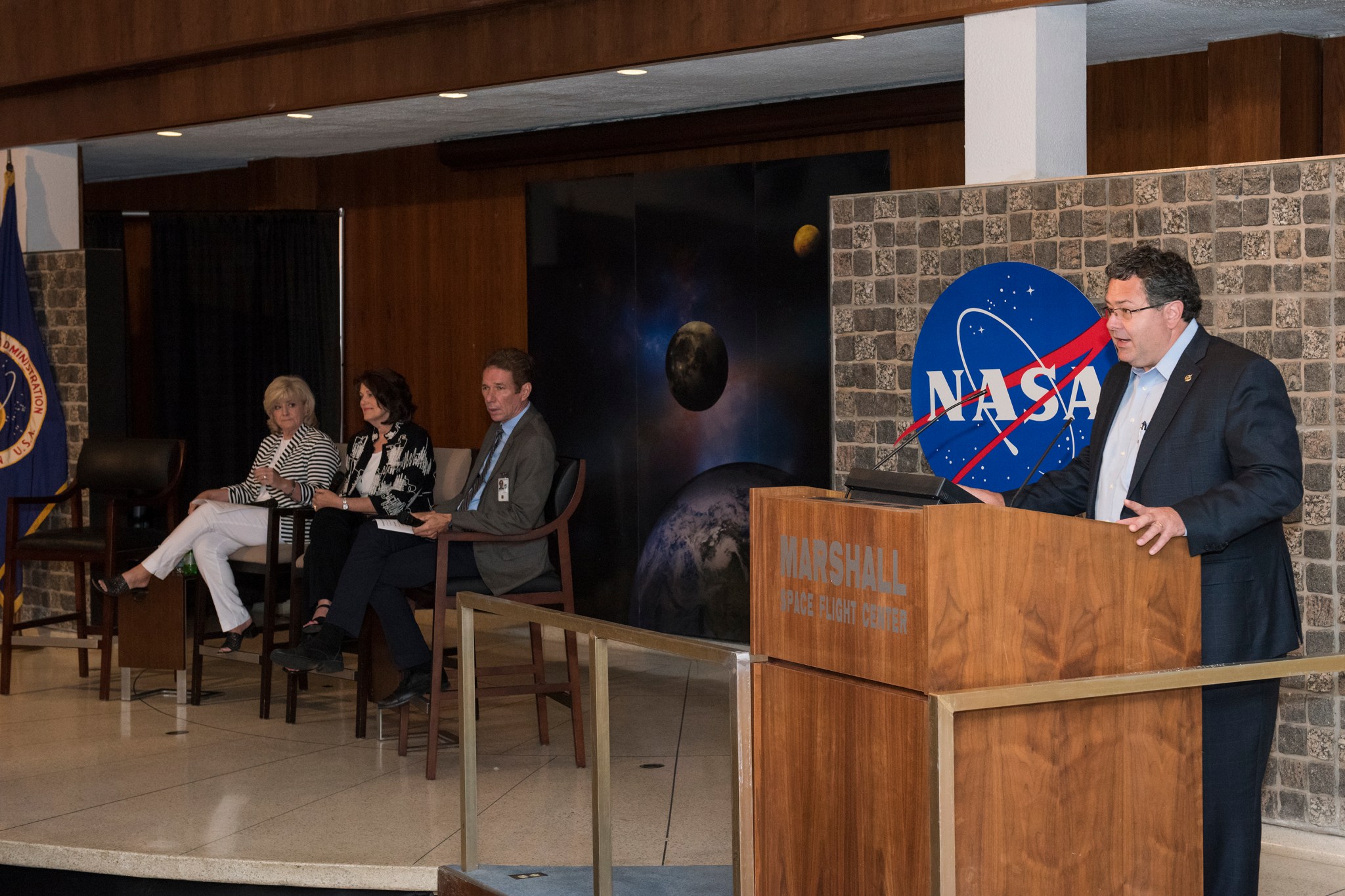
NASA Marshall Space Flight Center Director Todd May talks about his vision for the center during an all-hands meeting June 22 in Morris Auditorium, and broadcast centerwide. Also speaking to the Marshall team and taking questions during the event are, from left, Marshall Deputy Director Jody Singer, Associate Director Robin Henderson and Associate Director, Technical, Paul McConnaughey. “We’re in the business of making the impossible possible,” said May, citing progress on the Space Launch System and the journey to Mars and recounting highlights of Marshall’s 56-year history. (NASA/MSFC/Charles Beason)
Juno Meets Jupiter for July Fourth Fireworks
If you’re looking for fireworks on the Fourth of July, look no farther than the planet Jupiter. After a nearly five-year, 1.74 billion-mile trip, a basketball court-sized spacecraft called Juno will fire its main engine for 35 minutes, placing it into a polar orbit around Jupiter.
It will take 20 months for Juno to circle the giant planet 37 times, skimming to within 3,100 miles above the cloud tops. This marks the first time a spacecraft will orbit the poles of Jupiter, providing new answers to ongoing mysteries about the planet’s core, composition and magnetic fields.
The Juno spacecraft launched Aug. 5, 2011, from Cape Canaveral. NASA’s Jet Propulsion Laboratory manages the Juno mission, which is part of NASA’s New Frontiers Program, managed at NASA’s Marshall Space Flight Center.
NASA TV coverage of events leading up to July 4, as well as social events are listed below.
June 30
1 p.m. CDT — Mission overview news briefing at JPL
2 p.m. — Mission outreach briefing at JPL
July 4 — Orbit Insertion Day
Noon — Pre-orbit insertion briefing at JPL
10:30 p.m. — Orbit insertion and NASA TV commentary begin
July 5
1 a.m. — Post-orbit insertion briefing at JPL
These events will be broadcast online on NASA TV and NASA’s Ustream page.
Live coverage on orbit insertion day also will be available online via Facebook Live at NASA and JPL’s Facebook pages.
NASA Planetary Science Director Discusses Journey to Mars in Marshall Association Speech
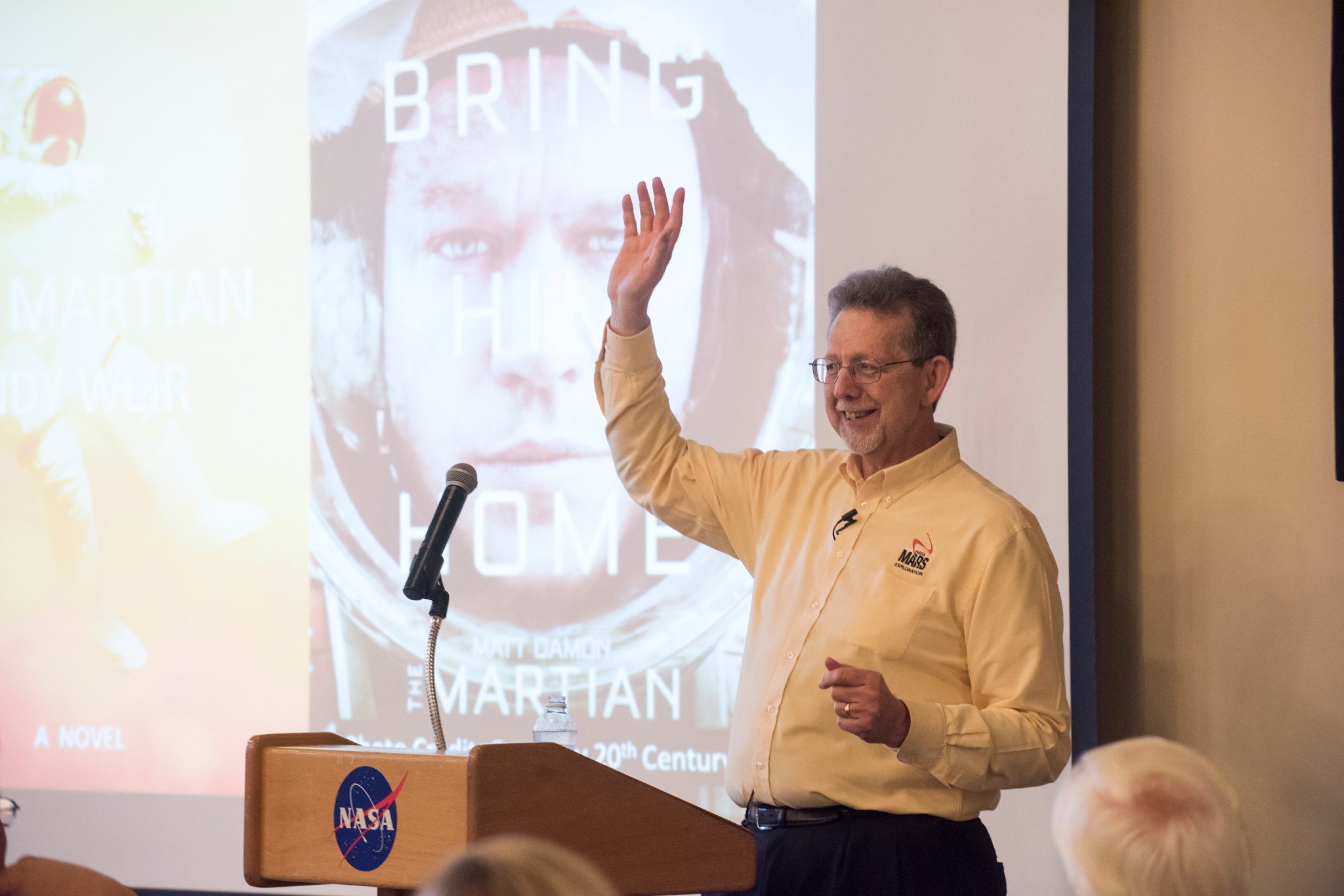
Jim Green, director of planetary science at NASA Headquarters, addresses Marshall team members during a June 28 luncheon hosted by the Marshall Association. Over the course of his 35-year career at NASA, he has supported a diverse array of planetary science missions, and recently served as science advisor for the film adaptation of “The Martian.” Green’s presentation was titled “The Martian: Science Fiction vs. Science Fact,” in which he discussed the movie and the nation’s journey to Mars. The Marshall Association is the center’s professional, employee service organization. (NASA/MSFC/Charles Beason)
Clandestine Black Hole May Represent New Population
Astronomers have combined data from NASA’s Chandra X-ray Observatory, the Hubble Space Telescope and the National Science Foundation’s Karl G. Jansky Very Large Array to conclude that a peculiar source of radio waves thought to be a distant galaxy is actually a nearby binary star system containing a low-mass star and a black hole. This identification suggests there may be a vast number of black holes in our galaxy that have gone unnoticed until now.
For about two decades, astronomers have known about an object called VLA J213002.08+120904 (VLA J2130+12 for short). Although it is close to the line of sight to the globular cluster M15, most astronomers had thought that this source of bright radio waves was probably a distant galaxy.
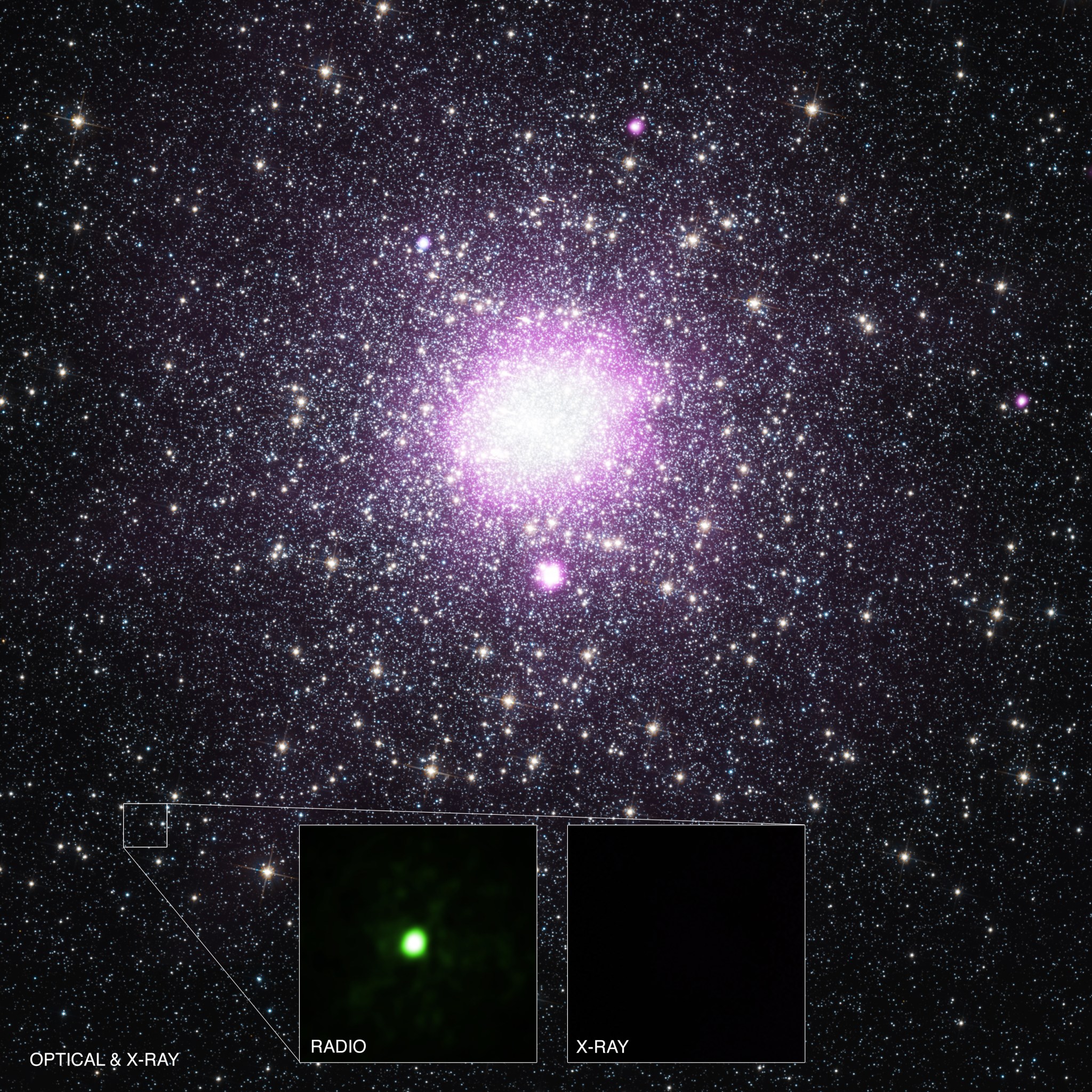
Thanks to recent distance measurements with an international network of radio telescopes, including the European Very Long Baseline Interferometry Network telescopes, the National Science Foundation’s Green Bank Telescope and Arecibo Observatory, astronomers realized that VLA J2130+12 is at a distance of 7,200 light years, showing that it is well within our own Milky Way galaxy and about five times closer than M15. A deep image from Chandra reveals it can only be giving off a very small amount of X-rays, while recent VLA data indicates the source remains bright in radio waves.
This new study indicates that VLA J2130+12 is a black hole a few times the mass of our sun that is very slowly pulling in material from a companion star. At this paltry feeding rate, VLA J2130+12 was not previously flagged as a black hole since it lacks some of the telltale signs that black holes in binaries typically display.
“Usually, we find black holes when they are pulling in lots of material. Before falling into the black hole this material gets very hot and emits brightly in X-rays,” said Bailey Tetarenko of the University of Alberta, Canada, who led the study. “This one is so quiet that it’s practically a stealth black hole.”
This is the first time a black hole binary system outside of a globular cluster has been initially discovered while it is in such a quiet state.
Hubble observations identified VLA J2130+12 with a star having only about one-tenth to one-fifth the mass of the sun. The observed radio brightness and the limit on the X-ray brightness from Chandra allowed the researchers to rule out other possible interpretations, such as an ultra-cool dwarf star, a neutron star or a white dwarf pulling material away from a companion star.
Because this study only covered a very small patch of sky, the implication is that there should be many of these quiet black holes around the Milky Way. The estimates are that tens of thousands to millions of these black holes could exist within our galaxy, about three to thousands of times as many as previous studies have suggested.
“Unless we were incredibly lucky to find one source like this in a small patch of the sky, there must be many more of these black hole binaries in our galaxy than we used to think,” said co-author Arash Bahramian, also of the University of Alberta.
There are other implications of finding that VLA J2130+12 is relatively near to us.
“Some of these undiscovered black holes could be closer to Earth than we previously thought,” said Robin Arnason, a co-author from Western University, Canada. “However there’s no need to worry as even these black holes would still be many light years away from Earth.”
Sensitive radio and X-ray surveys covering large regions of the sky will need to be performed to uncover more of this missing population.
If, like many others, this black hole was formed in the plane of the Milky Way’s disk, it would have needed a large kick at birth to launch it to its current position about 3,000 light years above the plane of the galaxy.
These results appear in a paper in The Astrophysical Journal. NASA’s Marshall Space Flight Center manages the Chandra program for NASA’s Science Mission Directorate. The Smithsonian Astrophysical Observatory in Cambridge, Massachusetts, controls Chandra’s science and flight operations.
For more Chandra images, multimedia and related materials, click here.
Marshall’s 2016 ‘Take Our Children to Work’ Activities Loft Young Minds Skyward
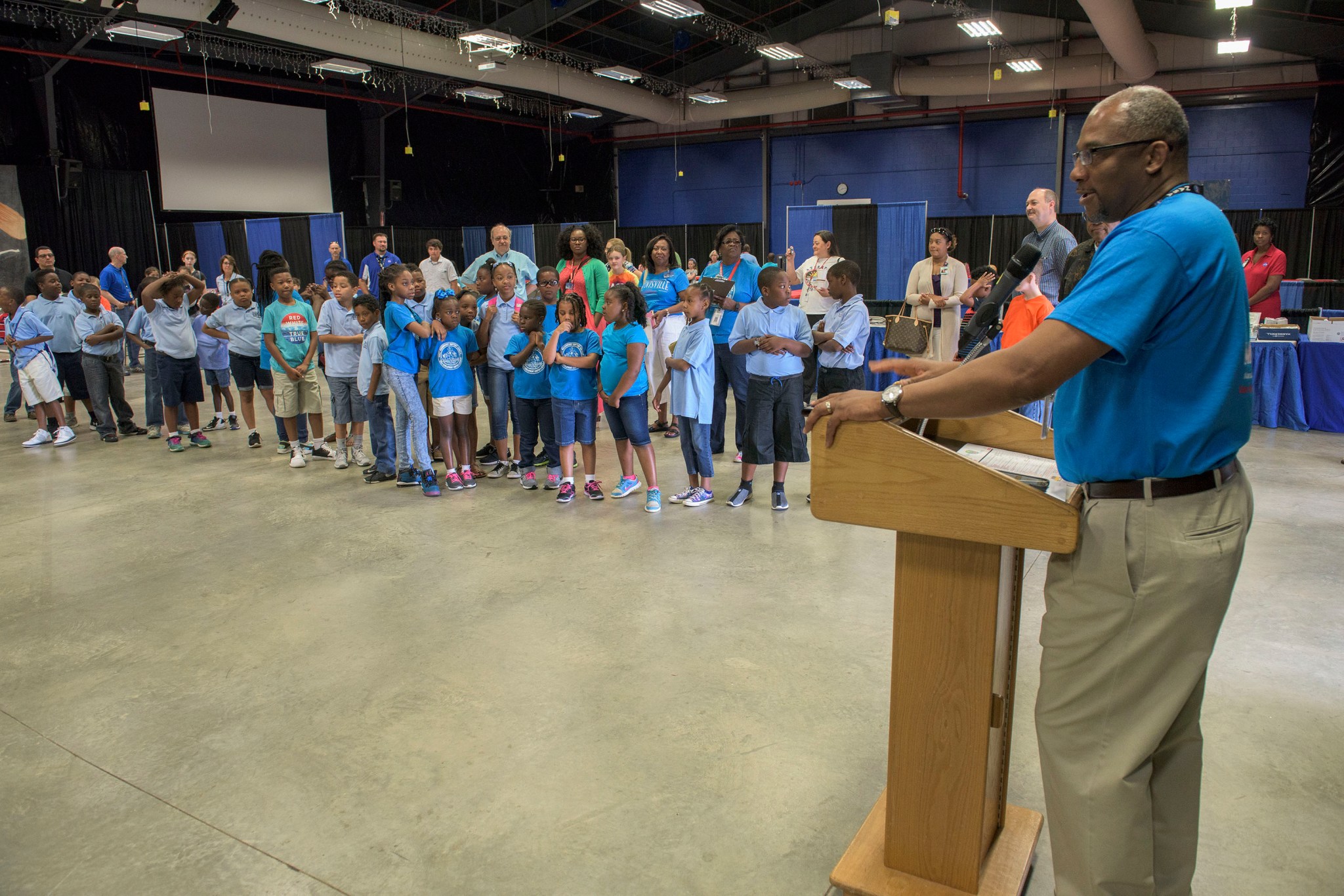
NASA’s Marshall Space Flight Center kicks off its annual “Take Our Children to Work Day” events June 23 with opening remarks from Loucious Hires, director of Marshall’s Office of Diversity and Equal Opportunity. An estimated 500 potential future spacefarers, scientists and engineers in grades 3-12 took part in the day’s activities, tours and presentations. (NASA/MSFC/Fred Deaton)
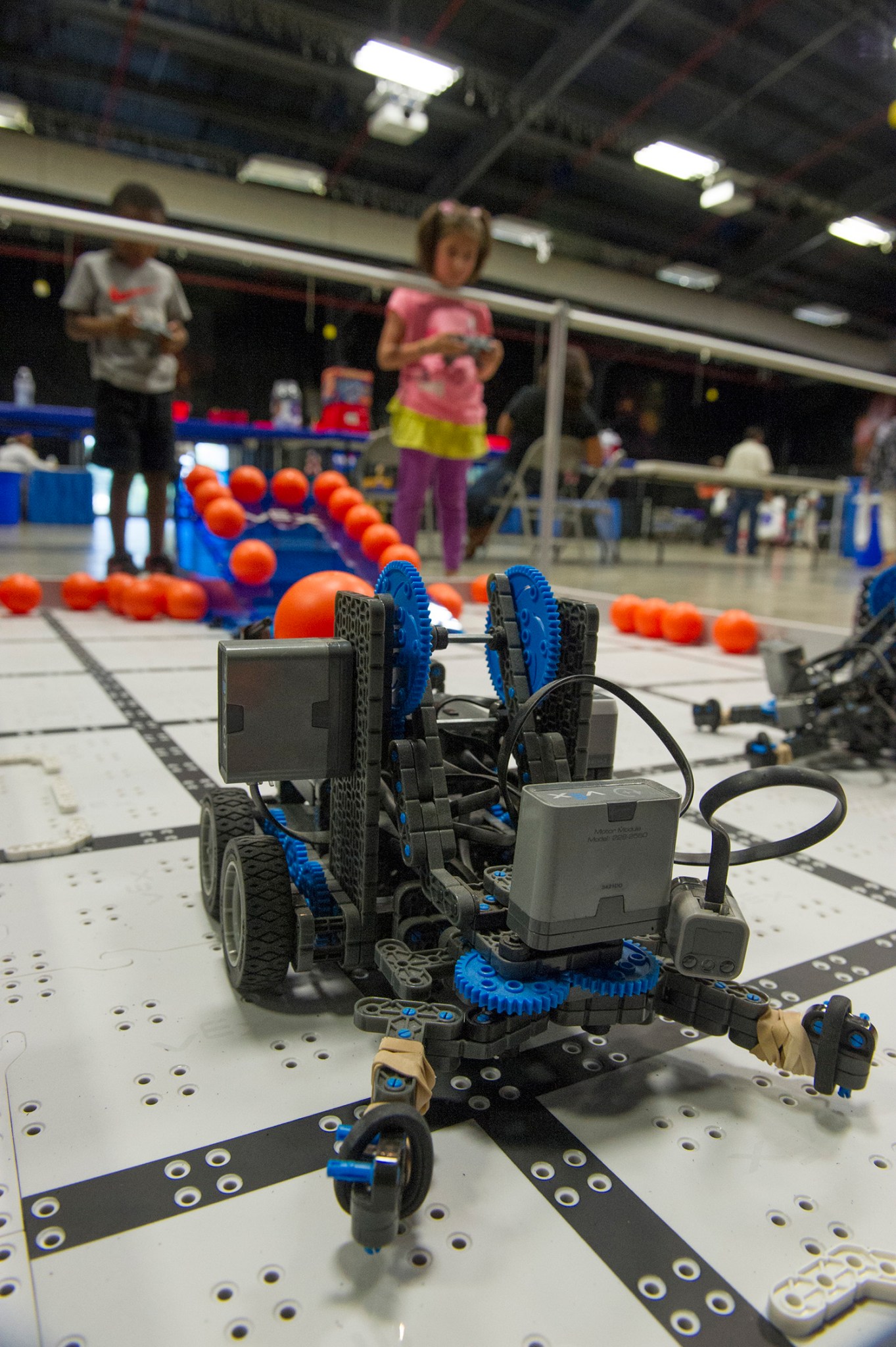
Young people participating in “Take Our Children to Work Day,” aided by students and teachers on the Moulton Robotics Technologies team from Moulton Middle School and Lawrence County High School, both in Moulton, Alabama, learned to operate robots, undertaking a simulated lunar expedition the way NASA explorers have — and will again when NASA journeys to the planet Mars. Working with robots, visiting the International Space Station Payload Operations Integration Center to learn about Marshall’s role in managing space station science and communications, and touring a variety of laboratories and mission activity hubs filled the children’s day. (NASA/MSFC/Emmett Given)
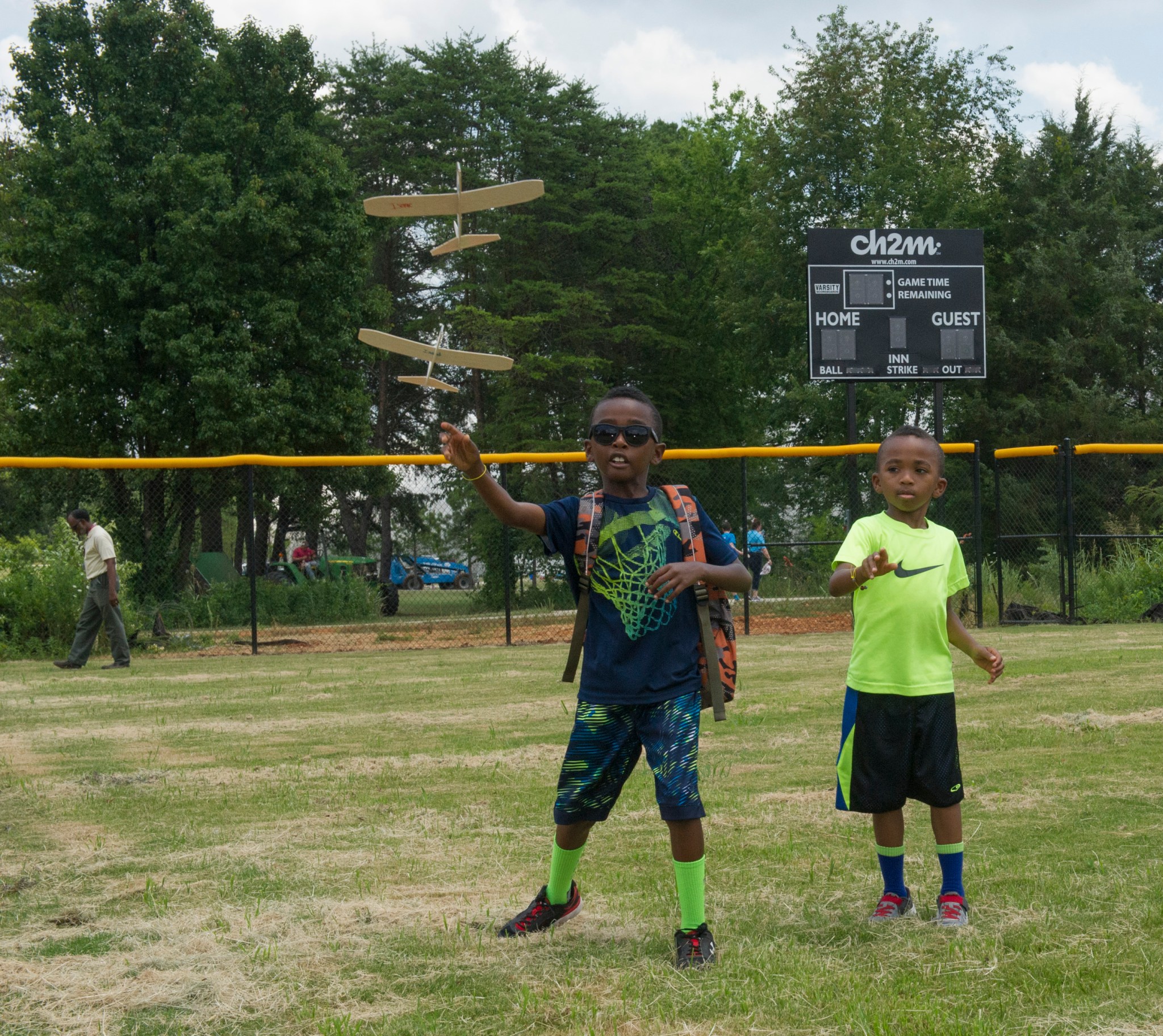
Isaiah Cylar, left, and his brother Isaac, sons of Rosalind Cylar, an attorney in Marshall’s Office of the Chief Counsel, test their balsa wood gliders during a “Take Our Children to Work Day” activity sponsored by The Boeing Company of Huntsville. Boeing is building the core stage of the Space Launch System for NASA, among numerous other partnerships. “One of the best aspects of the day is putting a human face on the men and women of NASA and its partners,” said Loucious Hires, director of Marshall’s Office of Diversity and Equal Opportunity, which organizes the annual event. “Kids know a little about what Mom or Dad or Grandma do at Marshall, but coming out here shows them a team unified in a common purpose, a shared mission — and that helps expose future generations to the rewarding careers they can find in aerospace engineering, in science and in continued exploration of the cosmos.” (NASA/MSFC/Emmett Given)
This Week in NASA History: ABMA Transferred to NASA, Creating Marshall Center — July 1, 1960
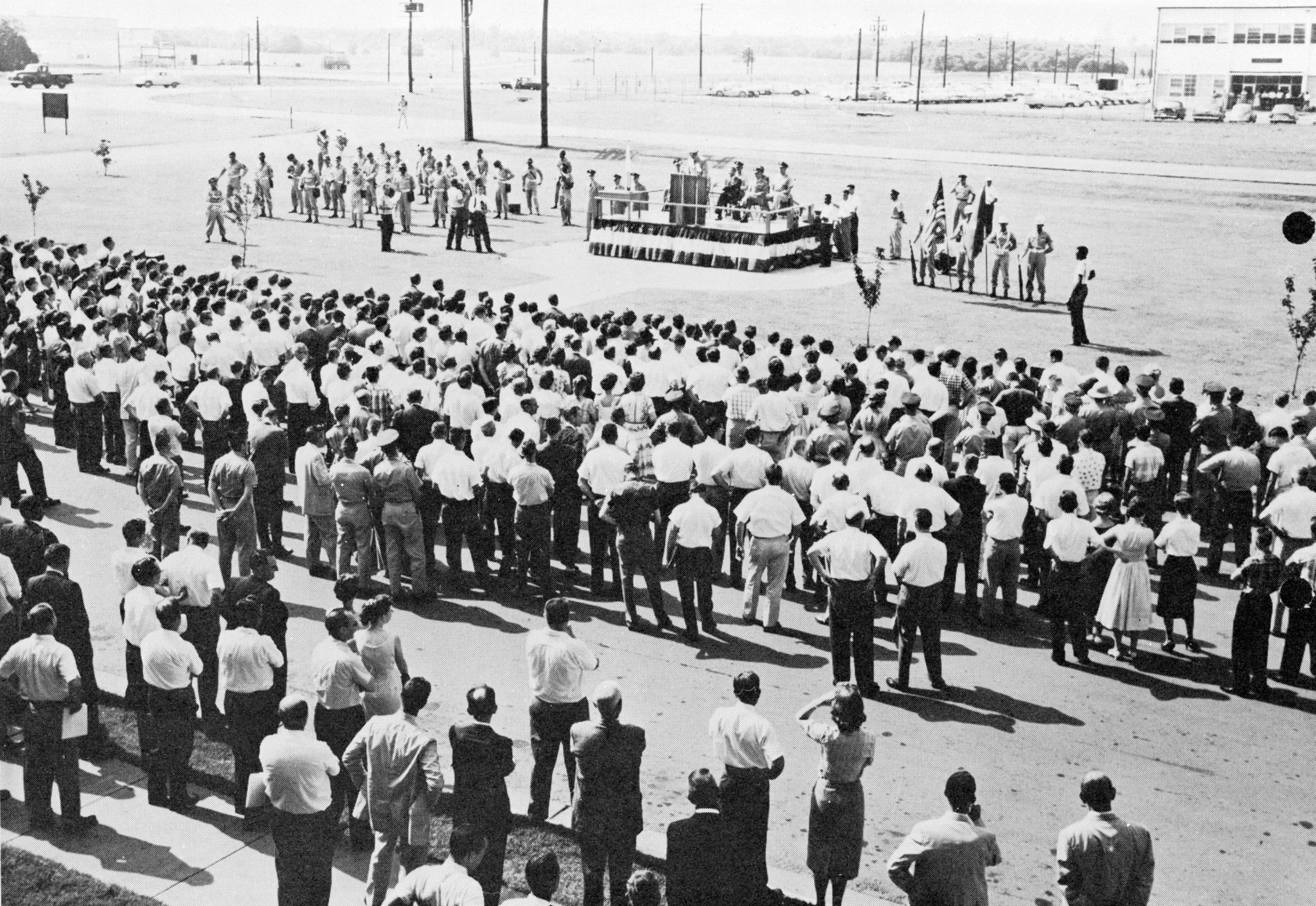
This week in 1960, the Army Ballistic Missile Agency was officially transferred to NASA, creating the Marshall Space Flight Center. Dr. Wernher von Braun, Marshall’s first center director, and Maj. Gen. August Schomburg officiated at the transfer ceremony in the front of the ABMA-MSFC joint headquarters, Building 4488. The NASA History Program is responsible for generating, disseminating, and preserving NASA’s remarkable history and providing a comprehensive understanding of the institutional, cultural, social, political, economic, technological, and scientific aspects of NASA’s activities in aeronautics and space. For more pictures like this one and to connect to NASA’s history, visit the History Program’s webpage. (NASA)
Obituaries
John T. Wiley Jr., 57, of Huntsville, died June 2. He retired from the Marshall Center in 2014 as an aerospace engineer. He is survived by his wife, Kay Wiley.
Anne S. Sittason, 78, of Decatur, Alabama, died June 22. She retired from the Marshall Center in 1995 as a secretary.


























